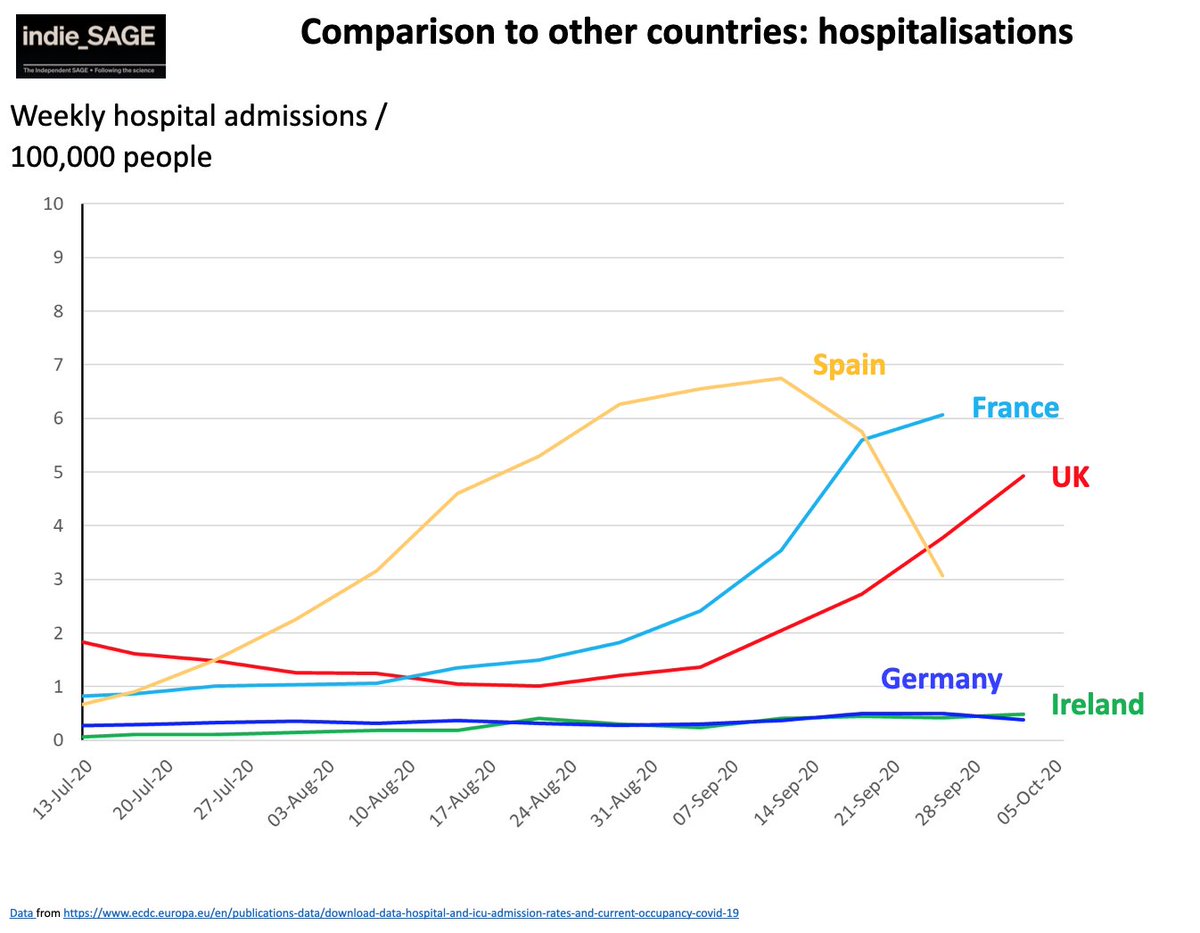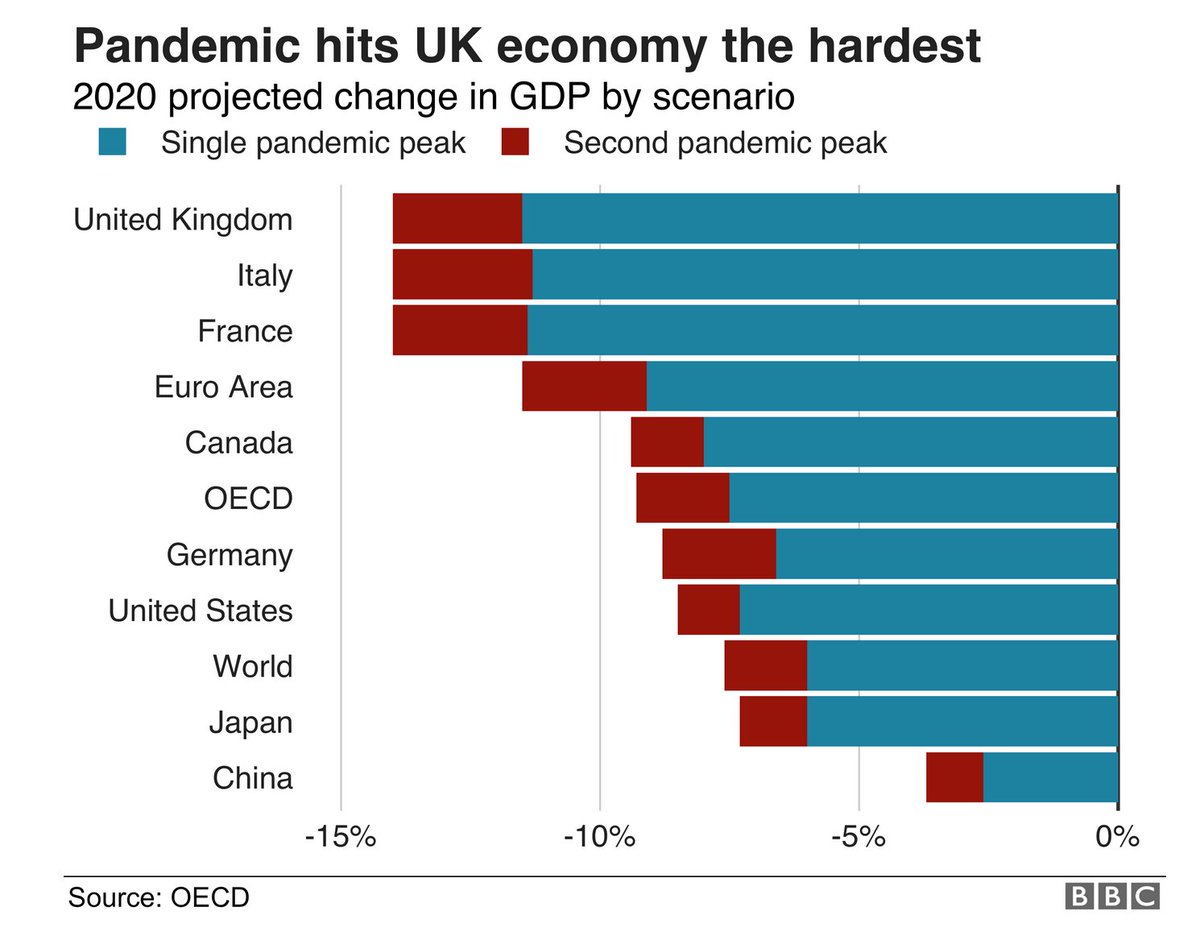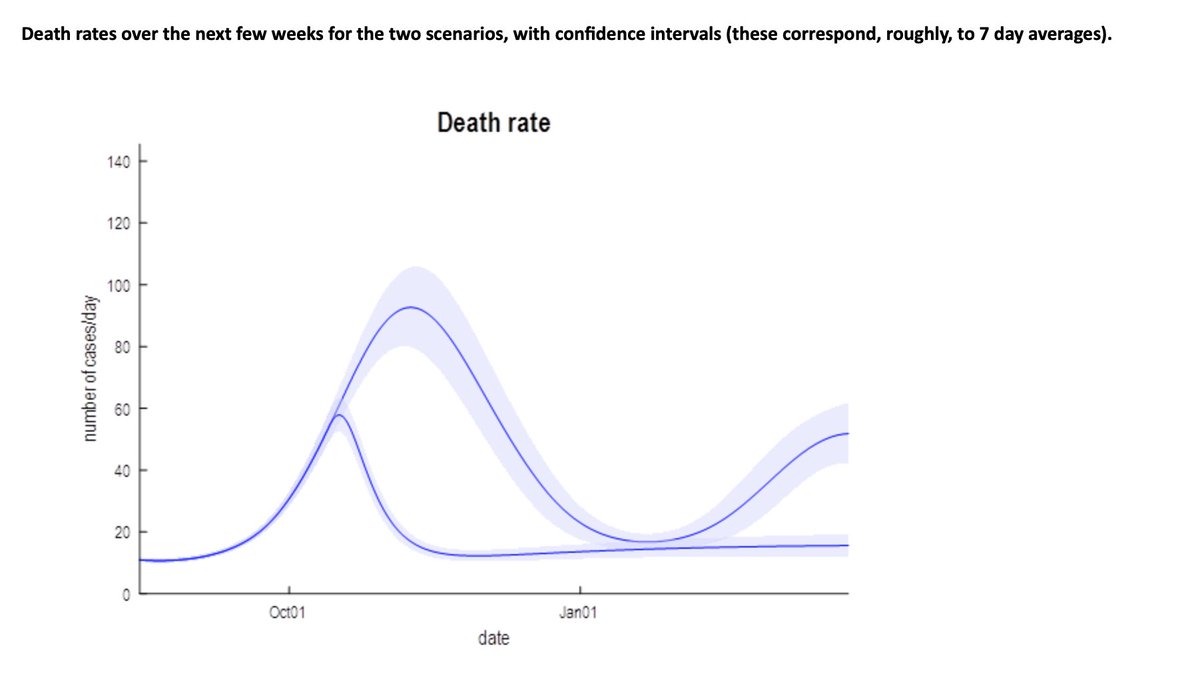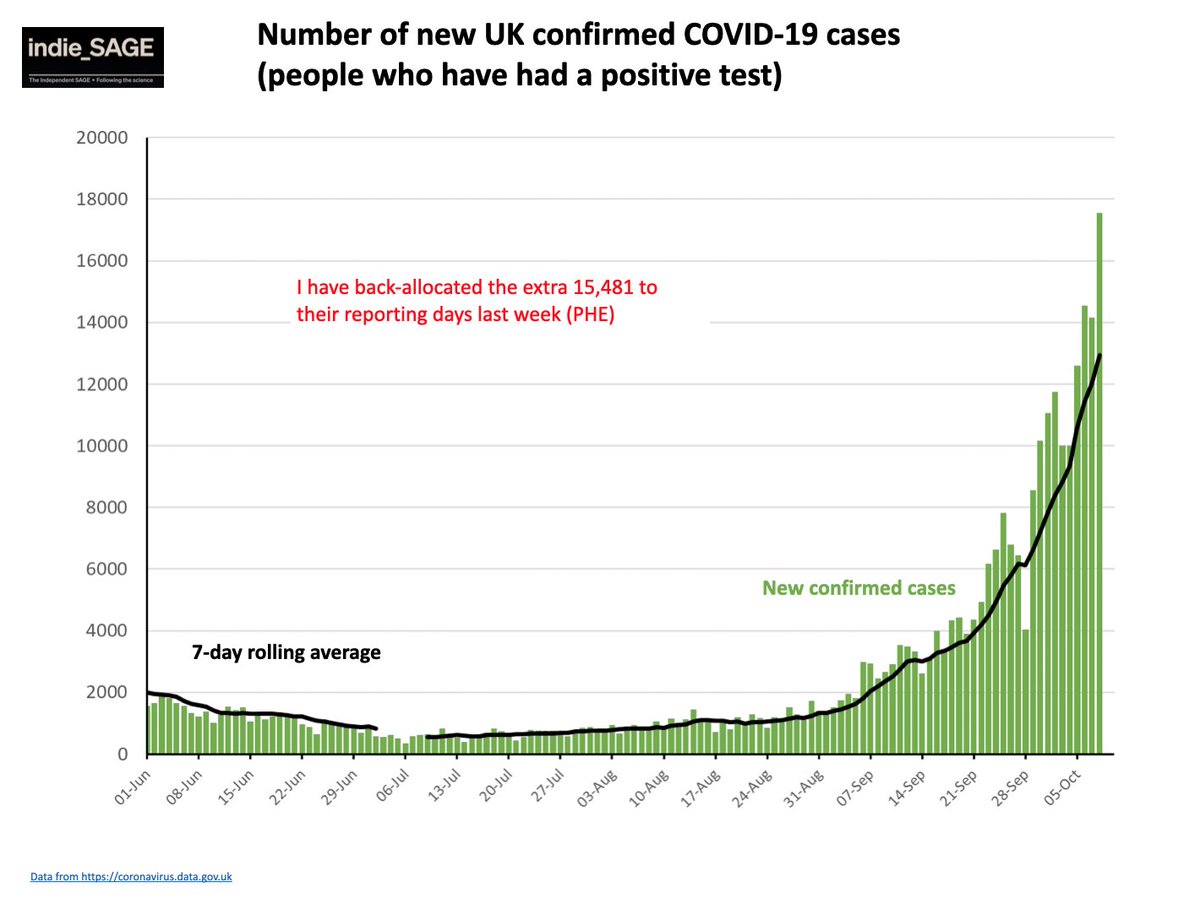We’re in a mess. Cases, hospitalisations and deaths are all rising. It& #39;s too late for test and trace to stop it. Things will just get worse. We have FOUR options: (1)
Option 1. LOCAL LOCKDOWNS: politicians don& #39;t want a national lockdown, so local restrictions only. But RISKS are that cases and deaths rise, with possible exponential spread (as in March), even if death rates r lower than Mar/April because more vulnerable people will shield.(2)
Option 1 risks (cont): other countries will block travel to and from UK, NHS overload, indirect NHS casualties from other conditions will mount, many people off work, economy falters like last time. (3)
Option 1 also means we shall reach a new state of ‘endemicity’…with oscillation (surges and falls) until such time as the virus has eaten its way through all exposed and vulnerable people. (4)
Option 2: CIRCUIT BREAKER starting in TWO WEEKS (half term). A 14 day complete lockdown to act as a circuit breaker, should stop transmission of infection within and between communities. This might also break the oscillation between surges and falls in infections. (5)
Option 2 Risks: We shall delay too long and miss an exponential increase in cases as happened in March. In March we locked down too late, and discontinued test and trace, which led to thousands of unnecessary deaths.
Karl Friston has modelled future deaths based on latest data. The two sets of lines correspond to projections under current levels of contact tracing and isolation with and without a circuit break from tomorrow, lasting for 14 days. Other models project higher death rates. (6)
Option 3: CIRCUIT BREAKER NOW: Transmission should fall, cases will fall, but, as in July, cases could plateau at too high a level (600 cases per day), and will eventually surge again. (7)
Option 3 Risks: Without FTTIS major reform, we shall be back in trouble in 2-3 months. There are doubts about a) whether the circuit breaker would work in only 14 days b) whether the government would stop after 14 or 21 days if deaths are still rising .... (8)
Option 3 Risks (cont): ...(because of the lag between transmission and death) and c) whether it is worth it if our find, test, trace and isolate system remains hopelessly dysfunctional. (9)
OPTION 4: CIRCUIT BREAKER NOW and IMMEDIATE reform of FTTIS. What would this look like?
In July cases fell to 600 per day but an inadequate and ideological find, test and trace programme based on centralised, privatised + ineffective companies worked outside the NHS... (10)
In July cases fell to 600 per day but an inadequate and ideological find, test and trace programme based on centralised, privatised + ineffective companies worked outside the NHS... (10)
... with a shameful absence of financial, clinical and monitoring support to ensure people isolated. It failed miserably. Tests too slow, few contacts found, no follow-up, and £10 billion spent. They could have given 10,000 GP practices £1 million each...with greater impact. (11)
We’re still not testing enough…WHO say if a country& #39;s rate of hospitalisation goes above 5% we should be doing more tests. We are at 5% now. And recent data show that 82% of cases didn& #39;t effectively self-isolate.(12)
Option 4 FTTIS reform. A. We must change the leadership of FTTIs (Harding, Hancock) and end these external testing and trace contracts. We need a new, experienced Minister (Greg Clark? Hunt?) and a strong public health leader and independent public health team to lead FTTIs. (13)
B. Build a much larger, nationwide information campaign about symptoms and isolation,
C. Fund a local test and trace system properly run through local district outbreak management teams including local public health, virology, primary care and local authority leaders... (14)
C. Fund a local test and trace system properly run through local district outbreak management teams including local public health, virology, primary care and local authority leaders... (14)
...backed up by volunteers if necessary. All people should have access to a test centre within 2-3 miles of their house linked to GP practices. Testing should be funded and integrated through 44 NHS molecular virology labs and Lighthouse labs under the same NHS governance. (15)
D. For people asked to isolate, their salaries must be covered in full by the government or a minimum of £800 paid to others to cover expenses for the 14 day period. (16)
Clinical assessment of cases and contacts is essential with daily follow-up by mobile phone conducted by contact tracers or volunteers. This happens in Germany, Finland and most of the Asian states. (17)
E. Fund local authorities properly to arrange requisitioning of hotels or provision of other facilities for people judged unable to isolate at home. Compliance with isolation is critical and should be monitored by calls, home visits or an app as in South Korea. (18)
F. All local authorities should have a budget for inspectors to monitor i) the local data on rigour/compliance with isolation, + ii) social distancing + hygiene measures in workplaces. Failure to comply with isolation shd incur deductions to financial support, or fines. (19)
Once this reformed FTTIS system is in place, a circuit breaker of 14-21 days (the relative impact of duration can be modelled) would aim to get us down to below 10 cases per 100,000. As in Taiwan, Finland, Japan, Norway, South Korea, Vietnam, China, Germany + many others. (20)
We’re in a pandemic. We need collective community discipline, and fair play for the most vulnerable. Not lockdown vs libertarianism but a short term circuit breaker to restore control, and a strong reformed FTTIS system to keep infection rates <10 per 100,000. (21)
We shd stay optimistic. A partially effective vaccine is probable. We need tight epidemic control until it is available, perhaps 6-12m. But not with our current mess + disorderly FTTIS. (22)
We missed our chance in July to keep the epidemic controlled. A lockdown was not inevitable. But I agree with SAGE scientists + support option 4, not stumble along with Options 1 or 2. (23)

 Read on Twitter
Read on Twitter







